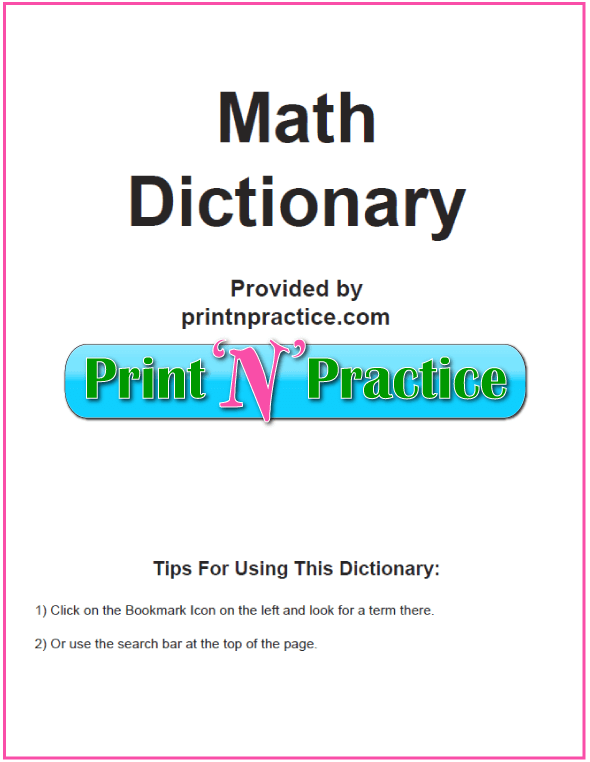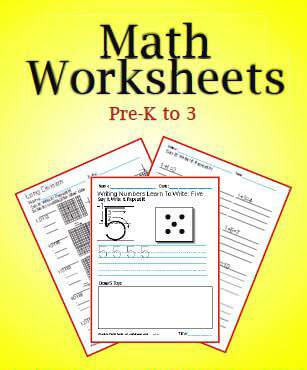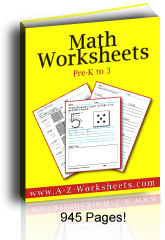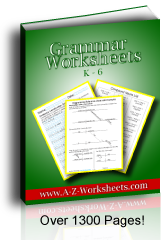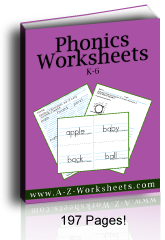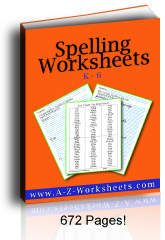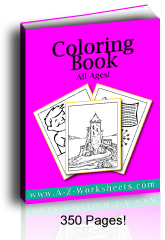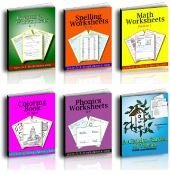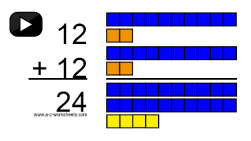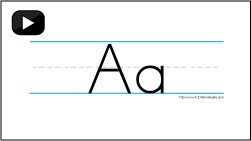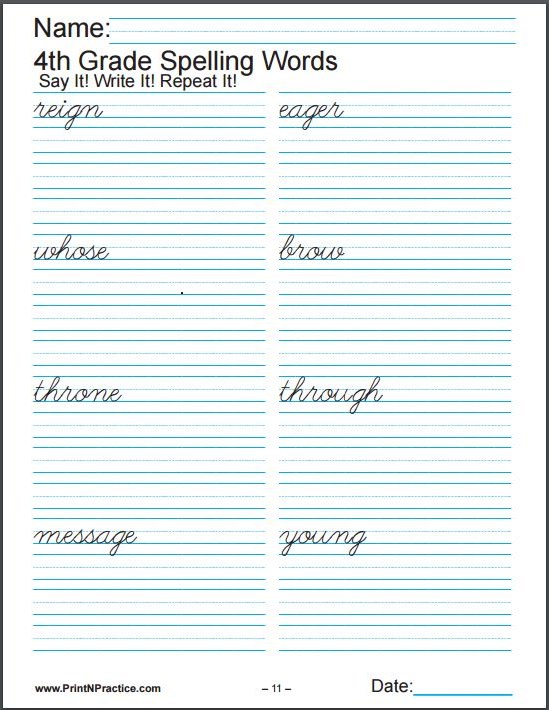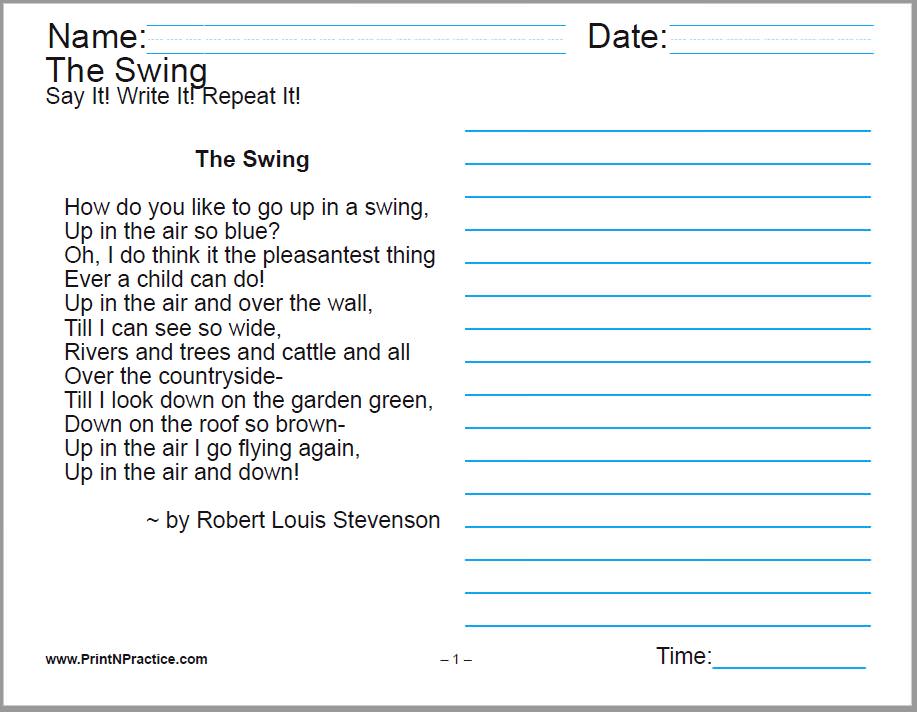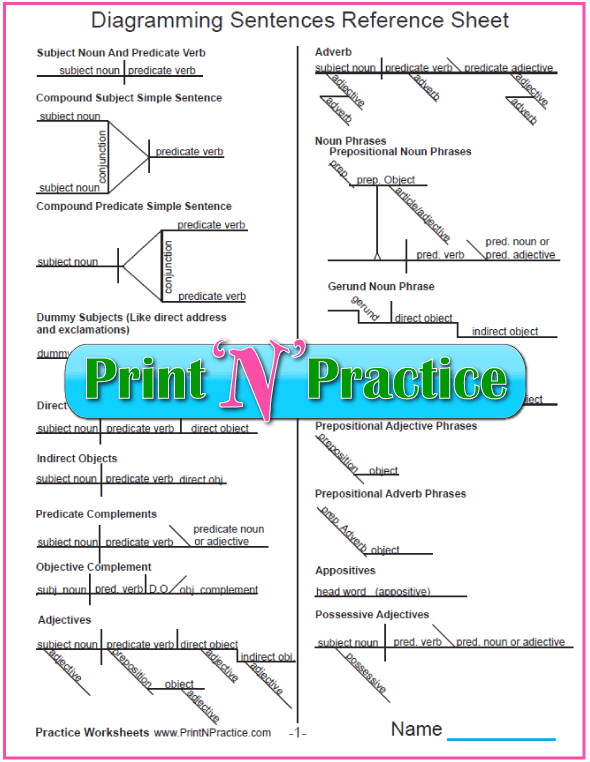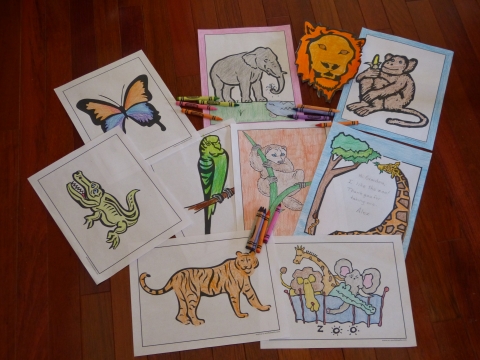- Home
- Printable Math Dictionary For Kids
- Math Words That Start With P
Words That Start With P
Parallel, Perpendicular, Polygon
This is the Math Dictionary words that start with P for words like: parallel, perpendicular, and perimeter.
Parallel is easier for kids to remember once you make the association that the double l toward the middle is a set of parallel lines.
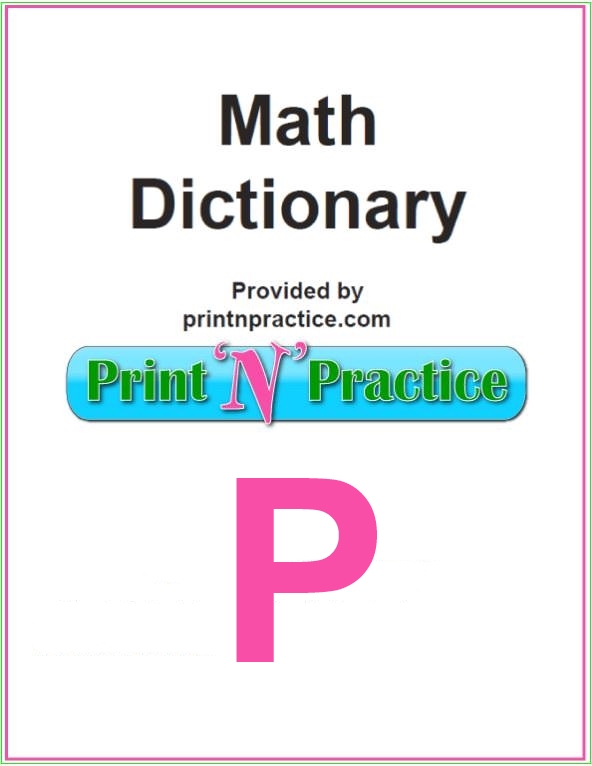 Math Words That Start With P: Fill in where your math glossary leaves off.
Math Words That Start With P: Fill in where your math glossary leaves off.List Of Words That Start With P
P.M. - the period of time between noon to just before midnight.
Palindrome - words, numbers and phrases that can be read the same backwards as forwards. (racecar, 1221)
Palindromic - a positive integer is said to be palindromic with respect to a base b if its representation in base b reads the same from left to right as from right to left.
Pandigital - a decimal integer is called pandigital if it contains each of the digits from 0 to 9.
Paraboloid - a paraboloid of revolution is a surface of revolution produced by rotating a parabola about its axis.
Paradox - a statement that appears to contradict itself.
Parallel - lines that are in the same plane that do not intersect.
Parallel Straight Lines - those which have the same direction.
Parallelepiped - a prism whose bases are parallelograms.
Parallelogram - a quadrilateral that contains two pairs of parallel sides.
Parallelopipedon - a prism having parallelograms for its bases.
Be encouraged to stay in touch! Join my free newsletter....
Join To Receive My Free PrintNPractice Newsletters!
Free Online Worksheets For School, Homework, And Homeschool Practice
Free Online Teacher Resources - Free Homeschool Curriculum
For teachers and parents: PrintNPractice free printable worksheets are all copyright-free, digital activities for students. Use them in homeschool, interactive notebooks for online classrooms, Google classroom, distance learning, tutoring and learning pods, and hybrid school.
- No prep.
- No tracking.
- Self learning.
- Copyright free.
- Lifetime license.
- Diverse learners.
- Easy drill-and-kill.
- Interactive worksheets.
- Printable morning work.
- Paperless morning work.
- Go printable or paperless.
- Stay on track. Summer review.
- Easy elementary school curriculum.
- Remote learning packets or homework.
- Most need no answer key or key is included.
- Videos for audio and visual learners. God bless headphones!
See free teacher and homeschool digital interactive school-at-home learning exercises with no login, no sign-up, no voucher, no account, and no credit card. Loads of digital activities for device-based learning. As seen at TeachersPayTeachers.
Parentheses - the symbols ( and ) used for grouping expressions.
Partnership - the association of two or more persons in business, who unite their capital and services, and share the gains or losses according to a stipulated agreement.
Pascal’s Triangle - a triangular array of binomial coefficients.
Pattern - characteristic(s) observed in one item that may be repeated in similar or identical manners in other items.
Pedal Triangle - the pedal triangle of a point P with respect to a triangle ABC is the triangle whose vertices are the feet of the perpendiculars dropped from P to the sides of triangle ABC.
More Words That Start With P
Pentagon - a five sided polygon.
Pentagonal Number - a number of the form n(3n-1)/2.
Pentomino - a five-square polyomino.
Percent - hundredths, a ratio that compares a number to one hundred. The symbol for percent is %, (cent = 1/100).
Perfect Cube - an integer is a perfect cube if it is of the form m3 where m is the integer, (m x m x m), (m)(m)(m).
Perfect Number - a positive integer that is equal to the sum of its proper divisors. For example, 28 is perfect because 28=1+2+4+7+14.
Perfect Power - a number which is the product of equal factors.
Perfect Square - an integer of the form m2 where m is an integer, (m x m), (m)(m).
Perimeter - the sum of the lengths of all the sides of a polygon, quadrangle s+s+s+s=p.
Permutation - a particular ordering of a set of objects, an arrangement of objects.
Perpendicular - two straight lines are said to be perpendicular if they meet at right angles.
Personal View - an approach taken by mathematicians and philosophers to calculate probability.
Pi - the ratio of the circumference to the diameter.(3.14)
Pictograph - a graph that uses symbols to represent data.
Pie Chart - a type of chart in which a circle is divided up into portions in which the area of each portion represents the size of the data.
Pie Graph - a diagram showing a system of connections or interrelations between two or more things by using a circle divided into segments that look like triangular pieces of a round pie.
Place Value - within a number, each digit is given a place value depending on it’s location within the number; ones, tens, hundreds, thousands.
Plane - a two-dimensional area in geometry.
Plane Surface - one with which a straight line joining any two of its points, will exactly coincide.
Plus sign - the + sign used to indicate the addition of numbers.
Point - has no dimension, it has position only.
Point - in geometry, a point represents a position, but has no size. A point called a vortex.
Polar Axis - a ray from the pole in a fixed direction, analogous to the x-axis in the Cartesian system. The angle between this fixed ray and a ray through the pole and the point of interest gives the value of theta in the coordinate pair (r,theta) used in the polar coordinate system.
Pole - in the polar coordinate system, a fixed point, analogous to the origin in the Cartesian coordinate system. The distance from this point to a point of interest gives the value of r in the coordinate pair (r,theta) used in the polar coordinate system.
Polygon - a closed plane figure formed by three or more line segments that do not cross over each other.
Polyhedra - any solid figure with an outer surface composed of polygon faces.
Polyhedron - a three-dimensional object whose faces are polygons.
Polyomino - a planar figure consisting of congruent squares joined edge-to-edge.
Positive Number - numbers that appear to the right of zero on the number line, a number having a plus sign either expressed or understood.
Power - either the number itself, or the product arising from using the number a certain number of times as a factor.
Practical Number - a positive integer m such that every natural number n not exceeding m is a sum of distinct divisors of m.
Prime - a number that has exactly two factors one and itself.
Prime Number - a number that has exactly two factors, 1 and the number itself.
Primitive Pythagorean Triangle - a right triangle whose sides are relatively prime integers.
Primitive Root of Unity - the complex number z is a primitive nth root of unity if zn=1 but zk is not equal to 1 for any positive integer k less than n.
Principle - a fundamental truth from which other truths are derived.
Prism - a polyhedron that is formed with two parallel polygons that are connected at the edges with rectangles.
Prism - a solid whose bases are equal polygons, and whose sides are parallelograms.
Prisoners - values for c in the Julia Set or Mandelbrot set where at each iteration the resulting value becomes smaller and smaller, approaching zero.
Probability - the measure of how likely it is for an event to occur.
Problem - a question to be solved.
Product - the answer when you multiply two (or more) numbers. Factor x Factor = Product.
Pronic Number - a number of the form n(n+1).
Proof - an argument that shows something (like a theorem) is true beyond any doubt.
Proper Divisor - the integer d is a proper divisor of the integer n if 0
Proper Fraction - a simple fraction whose value is less than one, the numerator is smaller than the denominator.
Property of Zero for Multiplication - zero times any number is zero.
Proportion - two ratios that are equivalent to each other, two equal ratios conected by an equal sign.
Protractor - an instrument used to measure and draw angles on a flat surface.
Pyramid - a three-dimensional solid whose base is a polygon and whose sides are triangles that come to a point at the top.
Pythagorean Theorem - the sum of the squares of the lengths of the legs of a right triangle is equal to the square of the length of the hypotenuse.
Pythagorean Triangle - a right triangle whose sides are integers.
Pythagorean Triple - an ordered set of three positive integers (a,b,c) such that a2+b2=c2.
Pythagorean Triples - whole numbers that work together in the Pythagorean theorem.
Hints to Remember the Definitions Of Math Terms
How to keep these definitions straight?
- Define the word.
- Make associations with related words.
- Draw or trace the image if possible.
Once children have a good definition explained to them and they then use the word in a sentence or Math word problem, they're much more likely to understand and remember the definitions.
I myself did not have an easy time remembering which was parallel and which was perpendicular until I began teaching Math. I remember them now because I've taught them and had to make the demonstrations, but also because the word parallel has the double L clue - those letters themselves are parallel. It's also a good way to remember that the spelling has the L twice.
Thank you for visiting our Math words that start with P.
Free Printable Math Dictionary
You can print and keep these Math definitions as a glossary in your binder or a file folder. You can also download it to your tablet or bookmark this page. See the alphabetical links below for more online Math words.
Buy Our Math Worksheets Bundle And Save Time!
- 945 PDF Math worksheets.
- Buy K-6 in one digital download.
- No ads.
- Filed by topic.
- Interactive. Printable.
- Use with any Math Lesson Plans.
- Addition, Subtraction, Multiplication, Division and Fraction Practice.
Buy PDF Kids Printable Worksheets Organized By Topic In Complete Digital Bundles Or Learn More Below.
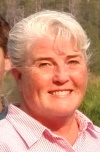
Mary Fifer, BSBA is webmaster, author, and researcher at PrintNPractice.com. She has created elementary school practice exercises using printable or digital interactive worksheets. Perfect for today's teachers, tutors, homeschoolers, and students!
Thank you for visiting and for sharing. :-)
Be encouraged to stay in touch! Join my free newsletter....
